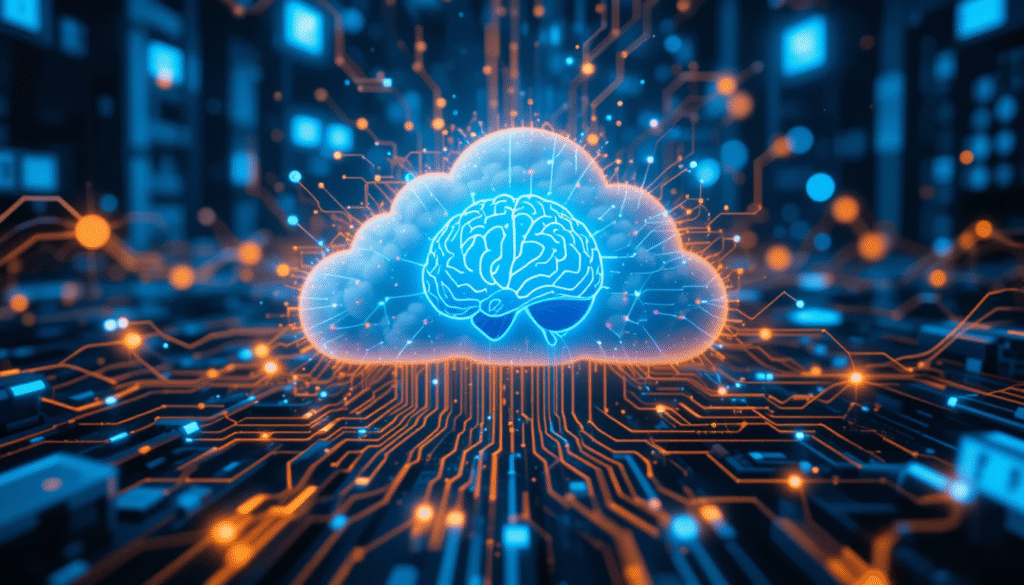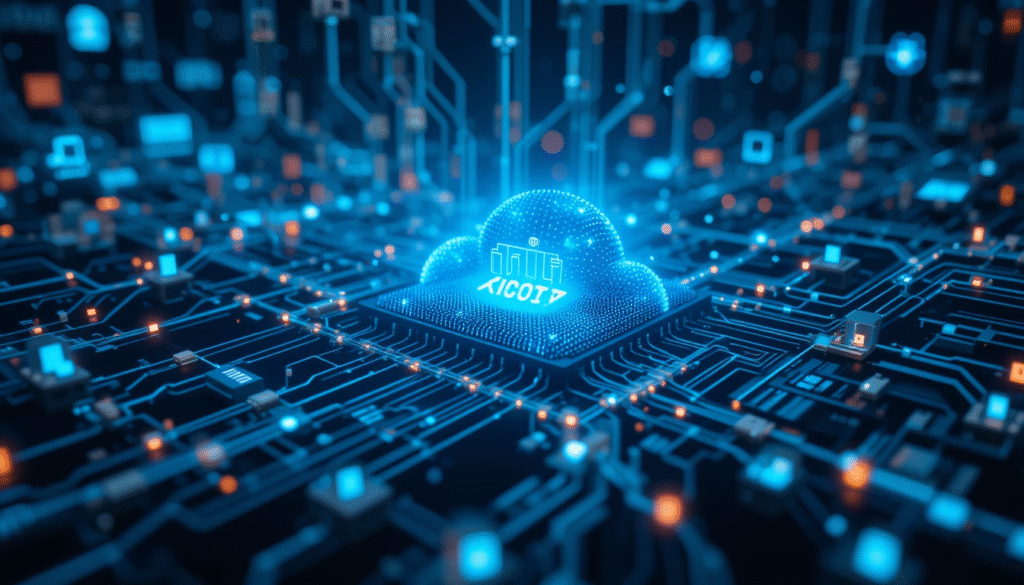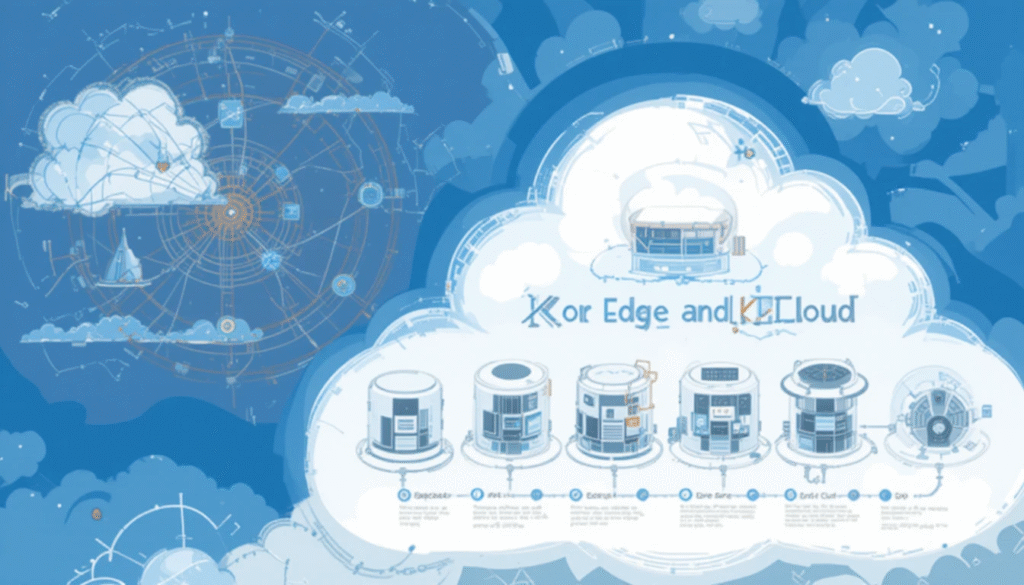Businesses and organizations are depending more and more on sophisticated computer models in the current digital era to effectively handle enormous volumes of data. Cloud computing and edge computing are two of the most popular strategies. Together, these technologies enable contemporary applications including big data analytics, the Internet of Things (IoT), artificial intelligence, and 5G networks. By utilizing edge and cloud computing platforms, businesses may improve security, lower latency, and expand operations more efficiently. Businesses looking to undergo digital transformation must comprehend these platforms, their features and how they integrate.

What is cloud computing?
Platforms for cloud computing give users on-demand access to pooled computer resources such servers, databases, storage, networking and apps. The provision of these services over the internet relieves enterprises of the responsibility of maintaining physical infrastructure.
Several well known cloud computing systems consist of:
AWS provides software as a service (SaaS), platform as a service (PaaS) and infrastructure as a service (IaaS).
One of the top providers of business cloud services with hybrid integration possibilities is Microsoft Azure.
Google Cloud Platform (GCP) is well-known for its skills in data analytics, AI and machine learning.
AI powered cloud computing with Watson integration is the main focus of IBM Cloud.
There exist three primary paradigms for cloud computing:
Public Cloud: Managed and hosted by other companies.
For increased security, a single firm uses a private cloud exclusively.
A hybrid cloud combines private and public clouds to provide flexibility.
What is Edge Computing?
Edge computing platforms move data processing closer to the source, whether it be a device, sensor or Internet of Things enabled equipment, in contrast to cloud computing, which centralizes data processing in distant servers. Businesses may enhance reaction times and lower latency by examining data at the network “edge.”
Important platforms for edge computing include:
Cisco Edge Computing Solutions: Offers industrial IoT and business edge data processing.
AWS IoT by Amazon Greengrass: Provides edge devices with access to AWS services.
Microsoft Azure IoT Edge enables direct execution of AI workloads and cloud services on IoT devices.
AI, retail, and 5G applications at the network edge are the focus of Google Distributed Cloud Edge.
Applications like industrial robots, healthcare monitoring systems, driverless cars and smart cities that need real time data processing depend heavily on edge computing.

The Value of Cloud and Edge Integration
Combining cloud computing with edge computing platforms is where contemporary computing true promise resides. While edge computing guarantees speed and local processing, cloud computing provides scalability. Together, they produce a potent ecosystem that strikes a balance between security, affordability and performance.
For example:
While edge computing can rapidly process medical device data for life-saving treatments, cloud computing can store patient records.
Cloud systems maintain previous data for predictive maintenance, while edge devices in production evaluate equipment performance in real time.
While cloud computing updates software and AI models, edge computing analyzes sensor data for instantaneous decision-making in autonomous cars.
Leading Cloud and Edge Computing Platforms
Amazon Web Services (AWS)
AWS offers a complete ecosystem for edge and cloud computing. It expands cloud capabilities to on premises and 5G networks with services like AWS Wavelength and AWS Outposts. With AWS Greengrass, AWS further facilitates the Internet of Things by enabling edge devices to respond to cloud based intelligence.
Microsoft Azure
With Azure IoT Edge, Microsoft Azure, a popular cloud computing platform, also facilitates edge computing. This service makes it possible for business logic and machine learning models to operate directly on Internet of Things devices. Azure is a great option for corporate solutions as it also blends in well with hybrid cloud settings.
GCP or Google Cloud Platform
For sectors including gaming, telecom, and retail, Google Distributed Cloud Edge offers low-latency data processing support. It becomes one of the top platforms for cloud and edge computing when combined with Google proficiency in AI and analytics.
IBM Cloud and Edge
IBM specializes in AI-driven solutions and hybrid cloud. With IBM Edge Application Manager, businesses can use the IBM Cloud for administration and storage while implementing AI and analytics at the edge.
Fog computing and Cisco Edge
Cisco provides strong infrastructure support with Cisco Edge Intelligence and fog computing models. These solutions are ideal for industrial IoT, smart cities and connected devices.
Benefits of Edge and Cloud Platforms
Reduced Latency: Edge computing platforms process data closer to devices, ensuring faster responses.
Scalability: Depending on demand, cloud platforms enable companies to scale their computer resources.
Improved Security: Sensitive data may be processed locally at the edge, decreasing exposure.
Cost effectiveness: With cloud computing, companies just pay for what they use.
Flexibility: The hybrid integration of edge and cloud offers a balance between storage and speed.
Cloud and Edge Computing Platform Challenges
These platforms have drawbacks despite their many advantages:
Data management: It is difficult to handle enormous amounts of data on several platforms.
Security Risks: Cyberattacks may target edge devices.
Integration Complexity: It takes specialized knowledge to seamlessly integrate cloud and edge.
Cost considerations: If not properly optimized, hybrid systems might be costly.
Regulatory Compliance: Data privacy and regulatory compliance are critical for sectors like healthcare and finance.
Cloud and Edge Platforms Future
Expanding 5G, integrating AI, and increasing automation are key components of the future of edge and cloud computing platforms. The need for hybrid models will only increase as linked gadgets, autonomous systems, and smart cities become more prevalent. Cloud providers are putting greater emphasis on edge native apps, while edge systems are developing to accommodate more sophisticated AI models locally. Adopting these technologies will provide businesses a competitive edge in terms of customer experience, creativity and efficiency.
Final Thoughts
Cloud and edge computing platforms are revolutionizing businesses by facilitating cost effectiveness, increased scalability, and quicker data processing. While edge computing guarantees real time decision making closer to devices, cloud computing offers robust centralized resources. They work together to generate a synergistic ecosystem that drives digital change in the future. The integration of these platforms opens up new possibilities and solutions for companies all over the world, whether they are in the industrial, healthcare, retail or transportation sectors.



